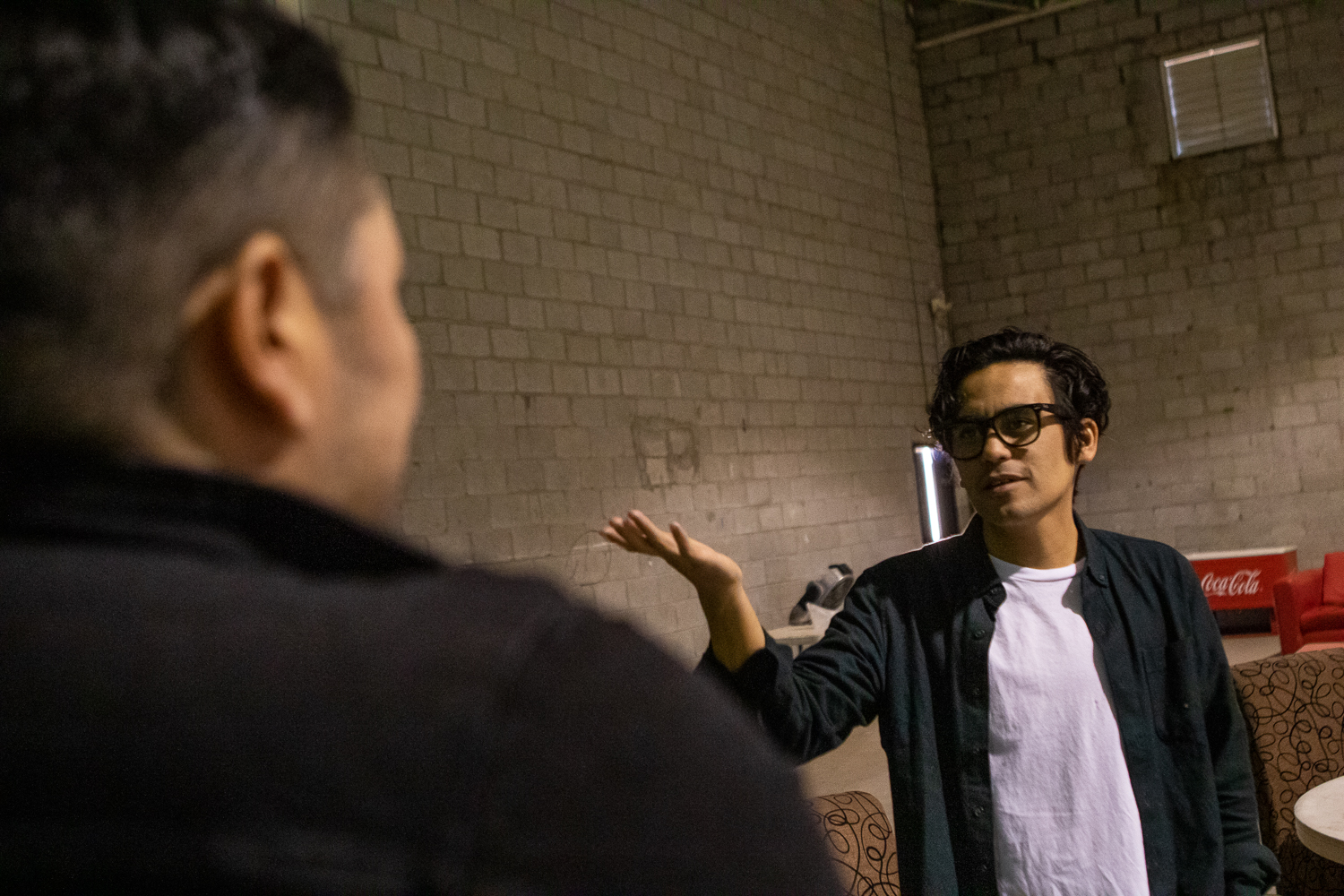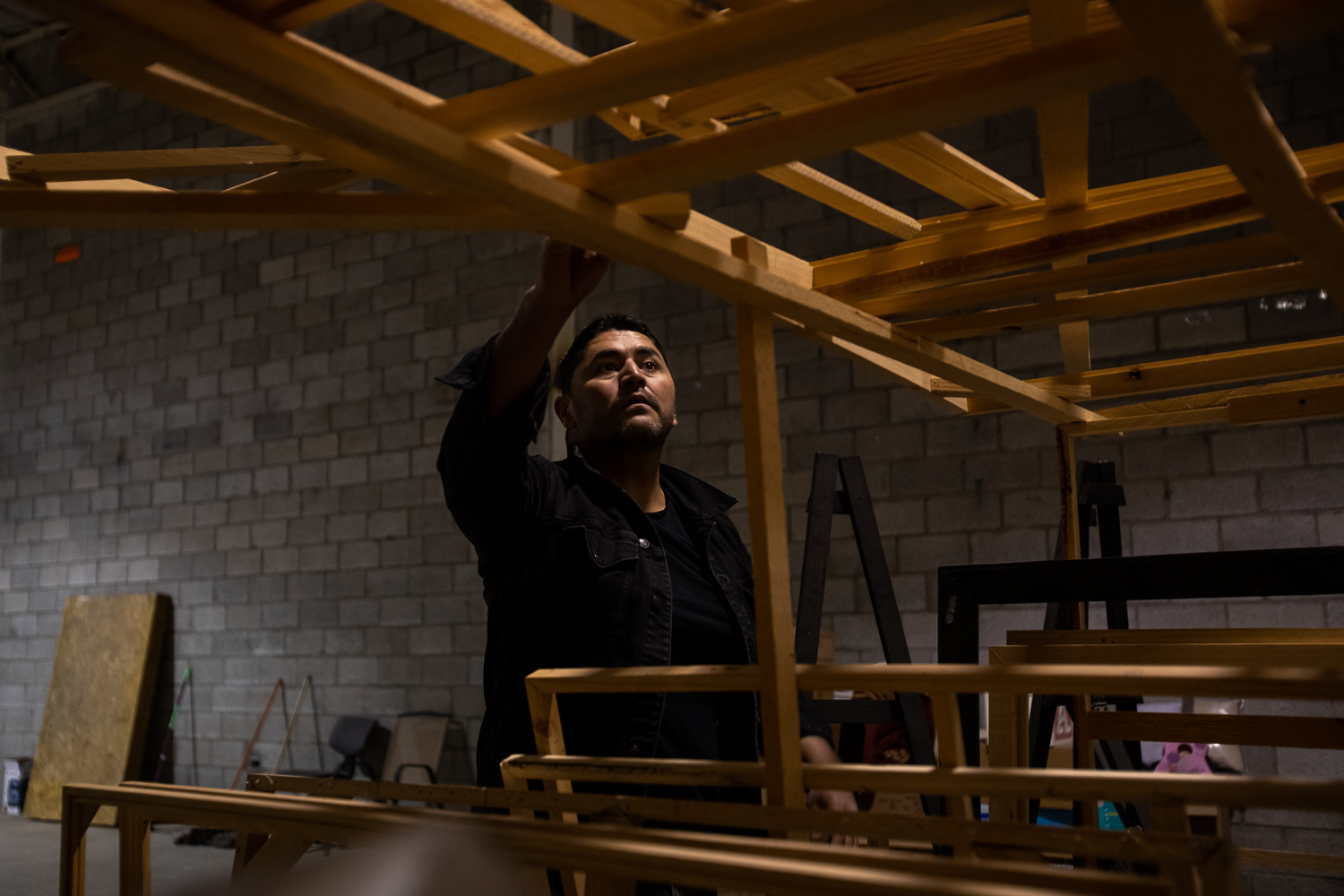Paulina Reza boarded a flight from Ciudad Juárez to El Paso in spring 2020. She flew from Ciudad Juárez to Mexico City, to Los Angeles, to Houston, and finally to El Paso, all so that she could work on music in person with her band.

Like other Juárez-based artists and musicians, Reza was affected by the COVID-related border travel restrictions for Mexican citizens. The closure permitted non-essential travel by Mexican nationals into the United States by plane, but not through land borders like those between El Paso and Ciudad Juárez.
She and her bandmates in Estereomance, a quintessentially fronterizo band with members who live on both sides of the border, had to figure out inventive ways to stay connected and make progress on new music after the pandemic hit.
“It was hard, those decisions,” said Reza, the lead singer of the band. Reza is a Mexican citizen who had formerly crossed the border regularly with a tourist visa. Her bandmates Manuel Calderon and Adria Del Valle both live in El Paso.
“That affected us, like in the harmony of the band … I remember we had a conversation and I was like, ‘Oh my economic situation, I can’t pay (for) another plane,’” she said.
The pandemic was devastating for creative industries internationally, with independent artists, musicians, venues and art spaces hit hard by closures and travel restrictions. Cultural and creative sectors were among the most impacted by COVID-19, according to the Paris-based Organisation for Economic Co-operation and Development, an international think tank.
Those impacts disproportionately impacted artists of color in the United States. Americans for the Arts reported that artists of color had higher unemployment rates and lost more creative income than white artists.
In binational metropolises like El Paso and Ciudad Juárez, where creative communities have long been intertwined, the way COVID-19 affected some Mexican artists has been profound.
“It was like a nightmare for me,” said Ciudad Juárez-based artist Jesus Leonel Portillo, known better as Pilo. “I had like seven years already working in El Paso, and to me my professional life was there.”

After a barrage of cancellations and missed opportunities, Pilo said he feels like he’s at an impasse, stuck in limbo. His work visa expired during the pandemic, and because of staffing shortages, wait times for visas have increased.
“I’ve been stuck in Juárez for more than a year,” Pilo said. “I’m starting from scratch (on) a lot of my projects. To be honest it’s kind of hard to be working for a lot of years there and suddenly the bridge is closed and you need to start over.”
Since the start of the pandemic, Pilo has had to turn down opportunities to show his work in New York and Los Angeles. He has since reconfigured plans he had for an immersive art space in El Paso — he now plans to make it in Ciudad Juárez.
Arturo Damasco, a Juárez-based muralist and painter best known for creating a nine-story mural of Juan Gabriel in downtown Juárez, said that because border artists were used to being interconnected and being able to cross frequently, it made the impact of the border closure all the more intense.
“Many of our clients are in the U.S., the (art materials) we buy are in the U.S., so (the border closure) definitely affected us a lot,” he said in Spanish.
Pilo explained that in his experience, there tends to be wider selection and cheaper art materials available in El Paso than in Juárez.

For Estereomance, the band found many workarounds to the border travel restrictions, including shuttling a studio’s worth of recording equipment from El Paso to Ciudad Juárez so that they could record a livestream concert for KTRU Rice Radio.
“It’s expensive gear, so crossing with expensive gear can be a little tricky,” Calderon said. “Fortunately we never ran into trouble.”
But Calderon and his bandmates in Estereomance were determined to stay optimistic despite the challenges of the border restrictions.
“Making music just involves a lot of working in person. … The music we’re trying to do is very connected to human emotion, so it’s hard to get that across a little screen,” Calderon said. “When we work on music or we produce, we feed off each other’s energy … so that’s something that we really missed during this whole quarantine.”
Cover photo: Arturo Damasco cleans a canvas in a Juárez gallery on Monday. (Corrie Boudreaux/El Paso Matters)


